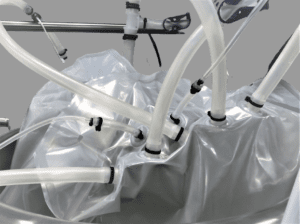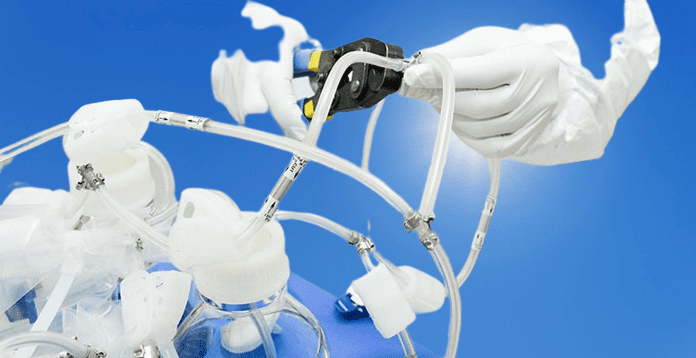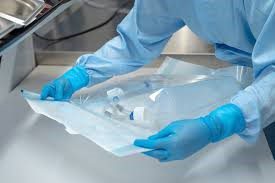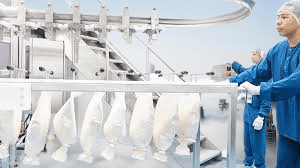Single Use System (SUS) have gained popularity in the pharmaceutical industry due to their advantages, but they also present certain risks. This article discusses the risks of single-use systems in pharmaceutical applications, including integrity and leakage issues, material compatibility concerns, extractable and leachable, sterility assurance challenges, disposal and environmental impact, and supply chain considerations. Proper risk assessment, quality control, and adherence to guidelines can help mitigate these risks.
Single Use System Risks in Biotechnology
Single Use System (SUS) have gained significant popularity and widespread use in the biotechnology industry due to their advantages such as flexibility, reduced contamination risks, and simplified operations. However, like any technology, Single Use System are not without their risks. Here are some potential risks associated with single-use systems in biotechnology:

- Integrity and Leakage: Single Use System rely on flexible plastic bags, tubing, and connectors, which may be prone to integrity issues. There is a risk of leakage or breakage, which can lead to product loss, contamination, and compromised process sterility. Manufacturers must ensure rigorous testing and quality control measures to minimize these risks.
- Material Compatibility: Single Use System utilize a variety of materials, including plastics, elastomers, adhesives, and films. Compatibility issues may arise between the materials used in the system and the process fluids or drug substances, leading to leaching, extractable, or particulate contamination. It is crucial to thoroughly evaluate material compatibility to mitigate potential risks.
- Extractables and Leachables: Single-use systems may release extractable compounds from their components into the process stream, which can pose a risk to product quality and patient safety. Extractables can include chemicals, additives, or degradation products that may have adverse effects. Leachables refer to compounds that migrate from the single-use system into the product, potentially causing contamination. Proper characterization and risk assessment of extractable and leachable are essential to ensure product safety.
- Sterility Assurance: Maintaining process sterility is critical in biotechnology applications. Single-use systems should be designed, assembled, and handled in a manner that prevents microbial ingress. Any breaches or defects in the system can compromise sterility and contaminate the product. Stringent control measures, such as environmental monitoring and appropriate handling techniques, are necessary to minimize the risk of microbial contamination.

- Disposal and Environmental Impact: Single-use systems generate a significant amount of waste, primarily composed of plastic materials. Improper disposal or lack of proper recycling practices can contribute to environmental pollution. Biotechnology companies should consider sustainable practices, such as recycling or waste management programs, to mitigate the environmental impact of single-use systems.
- Supply Chain Considerations: Reliance on single-use systems means biotechnology companies are dependent on their suppliers for consistent and reliable products. Any disruptions or issues within the supply chain, such as material shortages or changes in manufacturing processes, can impact the availability and quality of single-use systems. Companies should have contingency plans and maintain good supplier relationships to mitigate these risks.
To address these risks, industry organizations and regulatory bodies, such as the International Society for Pharmaceutical Engineering (ISPE) and regulatory agencies like the U.S. Food and Drug Administration (FDA) and the European Medicines Agency (EMA), provide guidance and standards for the implementation and qualification of single-use systems in biotechnology processes. Adherence to these guidelines, along with robust quality management systems, risk assessments, and supplier evaluations, can help minimize the potential risks associated with single-use systems in biotechnology.
Information for developing Single Use System
| Consideration | Description |
|---|---|
| Design | Determine system requirements, such as size, shape, and functionality, to meet specific process needs. |
| Material Selection | Choose compatible materials for bags, tubing, connectors, and filters to ensure product integrity. |
| Sterility Assurance | Implement measures to maintain system sterility, including aseptic manufacturing and packaging. |
| Leak Testing | Perform rigorous leak testing to ensure system integrity and prevent product loss or contamination. |
| Extractables/Leachables | Conduct comprehensive testing to identify potential extractable and leachable and assess their impact. |
| Scalability | Ensure the system can be scaled up or down to accommodate different batch sizes and production needs. |
| Disposal | Consider the environmental impact and implement appropriate disposal methods, such as recycling. |
| Quality Assurance | Establish robust quality control measures to ensure consistent performance and product safety. |
| Supply Chain | Develop strong relationships with suppliers and ensure a reliable supply chain for system components. |
| Regulatory Compliance | Adhere to applicable regulations and guidelines, such as those set by regulatory agencies (FDA, EMA). |

Different Guidelines for the Single Use Systems
- International Society for Pharmaceutical Engineering (ISPE):
- ISPE Baseline® Guide: Sterile Product Manufacturing Facilities (commonly referred to as the “ISPE Sterile Guide”) provide guidance on the design, qualification, and operation of facilities and equipment, including single-use systems, for sterile product manufacturing.
- United States Food and Drug Administration (FDA):
- FDA Guidance for Industry – Sterile Drug Products Produced by Aseptic Processing provides recommendations on the use of single-use systems in the aseptic processing of sterile drugs.
- European Medicines Agency (EMA):
- EudraLex – Volume 4, Annex 1: Manufacture of Sterile Medicinal Products sets out guidelines for the manufacture of sterile medicinal products, including principles that apply to single-use systems.
- Pharmaceutical Inspection Co-operation Scheme (PIC/S):
- PIC/S Guide to Good Manufacturing Practice for Medicinal Products provides general principles and guidelines for good manufacturing practice, including considerations for the use of single-use systems.
- Parenteral Drug Association (PDA):
- Technical Report No. 66: Application of Single-Use Systems in Pharmaceutical Manufacturing provides guidance on the implementation and qualification of single-use systems in the pharmaceutical industry.
It is important to note that guidelines and standards may vary by country or region. Regulatory authorities in different countries may have their own specific requirements or guidance documents regarding the use of single-use systems. It is recommended to consult the latest versions of these guidelines and relevant regulatory authorities in the specific jurisdiction where the manufacturing activities are being conducted.
Material of Construction (MOC) of the Single Use System.
Single Use System (SUS) in pharmaceuticals are constructed using a variety of materials that are compatible with the intended application and ensure the integrity and safety of the system. The specific materials used may vary depending on the components of the single-use system. Here are some common materials of construction for different components:
- Bags:
- Film layers: Polyethylene (PE), polypropylene (PP), ethylene vinyl acetate (EVA), cyclic olefin copolymer (COC), polyethylene terephthalate (PET), polyvinylidene fluoride (PVDF).
- Multi-layer films: Combinations of different polymers to achieve desired properties such as gas barrier, flexibility, and strength.
- Tubing and Connectors:
- Tubing: Thermoplastic elastomers (TPE), silicone, polyvinyl chloride (PVC), fluoropolymers.
- Connectors: Polypropylene (PP), acrylonitrile butadiene styrene (ABS), polyethylene (PE).
- Filters:
- Membrane filters: Polyethersulfone (PES), polyvinylidene fluoride (PVDF), nylon, polytetrafluoroethylene (PTFE).
- Depth filters: Cellulose, polypropylene (PP), polyethylene (PE), and glass fiber.
- Sterilization Wraps:
- Non-woven fabrics: Polypropylene (PP), polyester.
- Adhesives:
- Biocompatible adhesives: Polyurethane (PU), acrylic-based adhesives.
It’s important to note that material selection depends on factors such as compatibility with the drug substance or product, regulatory requirements, process conditions (e.g., temperature, pressure, and sterilization methods), and specific performance characteristics desired for the Single Use System.
The choice of materials should consider factors like leachables and extractables, biocompatibility, chemical resistance, mechanical properties, and adherence to relevant regulatory standards and guidelines.
It is recommended to consult with suppliers, manufacturers, and regulatory authorities for specific guidance on material selection for single-use systems based on the intended application and regional requirements.
Advantages and disadvantages of Single Use System
| Advantages | Disadvantages |
|---|---|
| Enhanced Flexibility | Higher Cost |
| Reduced Cross-Contamination Risk | Limited Reusability |
| Simplified Cleaning and Validation | Material Compatibility Concerns |
| Faster Changeover and Setup | Environmental Impact |
| Scalability and Batch-to-Batch Consistency | Supply Chain Dependencies |
| Reduced Capital Investment | Limited Process Compatibility |
| Elimination of Cleaning and Sterilization | Lack of Standardization |
| Reduced Water and Utility Usage | Leachables and Extractables Concerns |
| Decreased Risk of Process Contamination | Limited Design Customization |
Frequently Asked Questions:
What are the common materials used in single-use systems?
Answer: Single Use System often use materials such as polyethylene, polypropylene, thermoplastic elastomers, and fluoropolymers.
How are single-use systems validated for sterility?
Answer: Sterility validation of single-use systems typically involves integrity testing, microbial challenge studies, and assessing the efficiency of sterilization methods used during manufacturing.
What are extractables and leachables in single-use systems?
Answer: Extractables are chemical compounds that can migrate from the single-use system components into the product or process stream. Leachables, on the other hand, are the compounds that actually migrate and can potentially contaminate the product.
How are extractables and leachables evaluated in single-use systems?
Answer: Evaluation of extractables and leachables involves a combination of analytical testing, risk assessment, and toxicological evaluations to ensure the safety and suitability of the Single Use System for the intended application.
What steps should be taken to prevent system integrity issues and leakage?
Answer: Proper handling and storage, routine inspections, and rigorous quality control measures, including integrity testing, are essential to prevent system integrity issues and minimize the risk of leakage.
Can single-use systems be customized for specific process requirements?
Answer: Yes, Single Use System can be customized to some extent to meet specific process requirements, although customization options may vary depending on the supplier and the complexity of the system.
How can the environmental impact of single-use systems be mitigated?
Answer: To mitigate environmental impact, efforts can be made to recycle or dispose of Single Use System components responsibly, and suppliers may offer recycling programs for certain materials.
What considerations should be made for scalability when using single-use systems?
Answer: Scalability considerations include ensuring compatibility with larger or smaller batch sizes, adapting to different equipment, and addressing any process limitations that may arise when scaling up or down.
Are there any limitations on the types of pharmaceutical processes suitable for single-use systems?
Answer: While Single Use System have a wide range of applications, there may be certain processes that require specific equipment or may not be compatible with the disposable nature of single-use systems. Process compatibility should be evaluated on a case-by-case basis.
How can the risk of leachables and extractables be minimized?
Answer: Minimizing the risk of leachables and extractables involves selecting materials with low levels of potential contaminants, performing comprehensive testing, using appropriate filters, and adhering to best practices for handling and storage.
What role does regulatory compliance play in the use of single-use systems?
Answer: Regulatory agencies, such as the FDA and EMA, provide guidelines and regulations that govern the use of Single Use System in pharmaceutical applications. Compliance with these guidelines is crucial to ensure product safety and quality.
How can companies ensure a reliable supply chain for single-use system components?
Answer: Developing strong relationships with reputable suppliers, maintaining open lines of communication, and implementing robust supplier qualification and evaluation processes can help ensure a reliable supply chain for Single Use System components.

